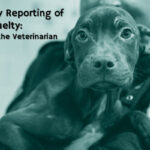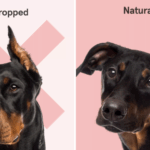Animal cruelty is a persistent societal issue that evokes a plethora of emotions ranging from anger to compassion. Yet, the question remains: What does the government actually do about animal cruelty? This inquiry leads us into the complex interplay between agencies, laws, and the often frustrating loopholes that can undermine efforts to protect our most vulnerable companions. By exploring the efforts of government bodies, we can begin to understand the mechanisms at play and how they affect the lives of countless animals.
At the heart of governmental efforts to combat animal cruelty lies legislation. In the United States, various federal and state laws have been established to protect animals from abuse and neglect. The Animal Welfare Act (AWA), enacted in 1966, serves as the cornerstone of federal animal protection laws. This act was initially focused on regulating the treatment of animals in laboratories but has since expanded to include animals in various sectors — from exhibition to transportation.
State laws complement federal initiatives, allowing for a more localized approach. Each state has its own animal cruelty statutes, which can vary significantly in terms of definitions and penalties. Some states exhibit progressive legislation that enables strict enforcement actions against perpetrators, including felony charges for egregious abuse. Other states, conversely, maintain laws that are narrowly defined, often minimizing the severity of the penalties imposed for cruelty. This disparity highlights a critical inconsistency in protective measures across the nation.
Enforcement of these laws, however, proves to be a formidable challenge. Many local law enforcement agencies lack the requisite training and resources to properly investigate animal cruelty cases. The responsibility often falls to animal control officers, whose jurisdiction can be limited. This fragmentation of enforcement leads to a situation where reported cases of animal cruelty may not receive appropriate attention or action, leaving countless animals in distress.
Moreover, the government’s response to animal cruelty extends beyond traditional law enforcement. Various agencies have been established to address different facets of animal welfare. The United States Department of Agriculture (USDA), for instance, plays a vital role in the enforcement of the AWA, overseeing facilities that handle animals, including research laboratories and zoos. However, the USDA has faced criticism for being inadequately staffed and for its enforcement measures lacking in rigor.
Moreover, the Federal Bureau of Investigation (FBI) has surprisingly entered the fray by including animal cruelty offenses in its Uniform Crime Reporting (UCR) Program. This initiative is designed to enhance data collection about animal cruelty, shining a light on the prevalence of these crimes and facilitating better allocation of resources for their prevention and enforcement. Yet, despite such promising steps, critics argue that the true extent of animal cruelty remains obscured, as many cases go unreported.
Animal rights advocates have long pointed out that there are glaring loopholes in the existing legal framework that criminals can exploit. One prominent example is the distinction between acts of cruelty and neglect. While outright abuse is often met with legal repercussions, instances of neglect — such as failing to provide adequate food, water, shelter, or veterinary care — sometimes lack the same deterrents. The ambiguity in defining neglect can leave many victims unprotected, rendering legislation insufficient in addressing the problem holistically.
Another loophole arises with the increasing prevalence of animal fighting rings. Despite being outlawed in many states, underground operations persist, often operating in secrecy. These illegal activities thrive on weak enforcement and an inadequate legal response. Law enforcement agencies may require a concerted effort and cooperation among municipal, state, and federal authorities to dismantle and prevent such heinous operations effectively.
In the quest for better protection of animals, there is a growing movement to shift the perspective toward treating animals as sentient beings deserving of welfare protections. Proponents of this shift argue that animal cruelty laws should reflect a fundamental understanding of animals’ emotional and physical capacities. The “Animal Bill of Rights,” for example, posits that animals should have the right to live free from exploitation, abuse, and neglect. Such transformative initiatives, though still in their infancy, can catalyze significant changes in how society perceives and legislates animal welfare.
To further understand the governmental response, it is paramount to recognize the role of non-profit organizations that work in tandem with governmental efforts. Groups like the Humane Society of the United States and the ASPCA engage in advocacy, education, and emergency response to animal cruelty cases. They often serve as a bridge between the public and governmental agencies, fostering greater awareness and facilitating reporting mechanisms that may otherwise remain dormant.
The public also bears a responsibility in this dialogue. Grassroots activism and community engagement can press the government for stricter enforcement and ethical animal treatment standards. Efforts such as campaigns, educational programs in schools, and public service announcements can empower citizens to act against cruelty and hold officials accountable for their roles in prevention and enforcement.
In conclusion, while the landscape of government action against animal cruelty comprises a tapestry woven from various laws, agencies, and non-profit efforts, significant gaps remain. The laws often exist in silos, rife with loopholes that allow individuals to escape accountability. Thus, a multifaceted approach involving legislative, enforcement, and communal efforts is essential for meaningful change. By fostering an environment where animals are recognized for their intrinsic worth, society can lay the groundwork for a future with diminished cruelty and enhanced stewardship toward all beings sharing our planet.




